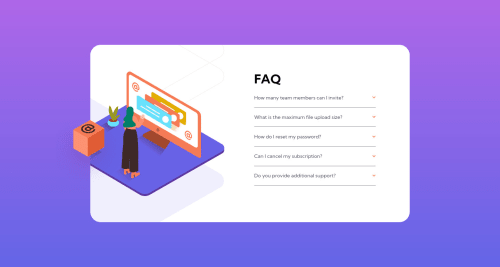Submitted about 4 years agoA solution to the FAQ accordion card challenge
Regular HTML, CSS, and JavaScript
@mjmorrison10

Solution retrospective
Any tips would be appreciated.
Code
Loading...
Please log in to post a comment
Log in with GitHubCommunity feedback
No feedback yet. Be the first to give feedback on Michael Morrison's solution.
Join our Discord community
Join thousands of Frontend Mentor community members taking the challenges, sharing resources, helping each other, and chatting about all things front-end!
Join our Discord